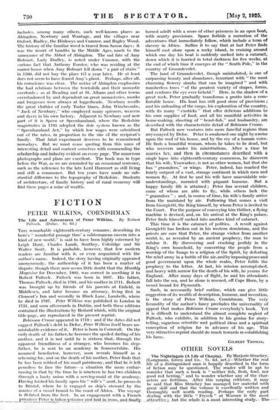" THE VICTORIA HISTORY OF THE 'COUNTY OF BERK- SHIRE.
Edited by W. Page and the Rev. P. H. Ditehfield. Vol. IV. (St. Catherine Press. 638. net.) ANOTHER pre-War volume of the great Victoria History, com- pleting Berkshire, is to be welcomed. It deals minutely with the topography of ten. hundreds, parish by. parish, and includes, among many others, such well-known places as Abingdon, Newbury and Wantage, and the villages near Oxford, Radley, the Hinkseys and Cumnor, and Bagley Wood. The history of the familiar wood is traced from Saxon days ; it was the resort of bandits in the Middle Ages, much to the annoyance of the Abbot of Abingdon. The sad fate of Amy Robsart, Lady Dudley, is noted under Cumnor, with the curious fact that Anthony Forster, who was residing at the manor house when Amy Robsart fell down " a pair of stairs " in 1560, did not buy the place till a year later. He at least does not seem to have feared Amy's ghost. Perhaps, after all, his conscience was clear. The notice of Abingdon emphasizes the bad relations between the townsfolk and their monastic overlords ; as at Reading and at St. Albans and other towns overshadowed by and dependent on great monasteries, monks and burgesses were always at loggerheads. Newbury recalls the great clothier of early Tudor times, John Wincheombe, " Jack of Newbury," who employed many spinners, weavers and dyers in his own factory. Adjacent to Newbury and now part of it is Speen or Speenhamland, where the Berkshire magistrates in 1795 adopted the dole system known as the " Speenhamland Act," by which low wages were subsidized out of the rates, in proportion to the size of the recipient's family. That fatal experiment deserves to be remembered nowadays. But we must cease quoting from this mass of interesting detail and content ourselves with commending the scholarship and industry evident on every page. The numerous photographs and plans are excellent. The book was in type before the War, as we are reminded by an occasional sentence, such as the reference to the late Lord Harcourt as still living and still a commoner. But ten years have made no sub- stantial difference to the topography of Berkshire. Students of architecture, of family history and of rural economy will find these pages a mine of wealth.











































 Previous page
Previous page